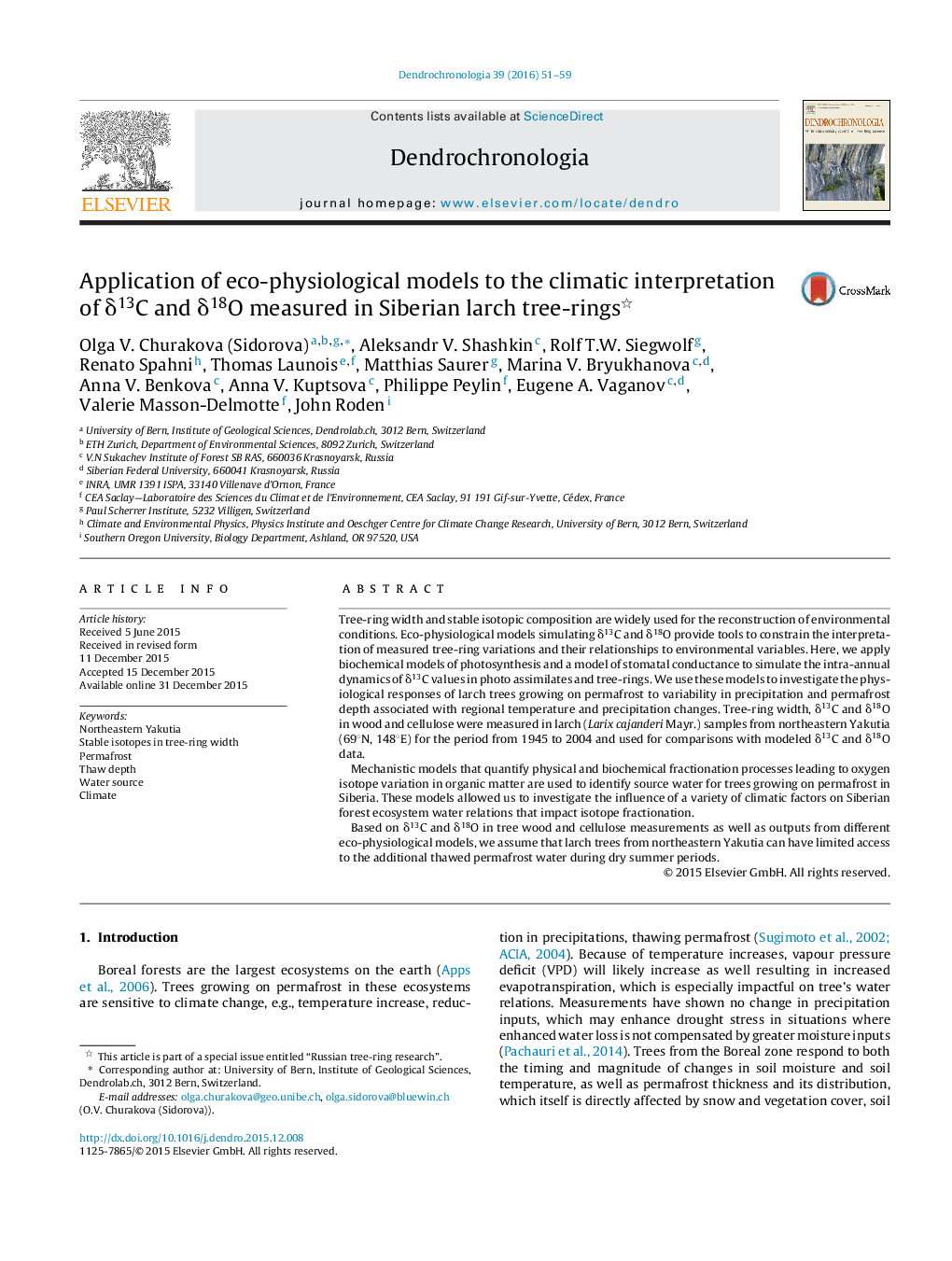| Article ID | Journal | Published Year | Pages | File Type |
|---|---|---|---|---|
| 85571 | Dendrochronologia | 2016 | 9 Pages |
Tree-ring width and stable isotopic composition are widely used for the reconstruction of environmental conditions. Eco-physiological models simulating δ13C and δ18O provide tools to constrain the interpretation of measured tree-ring variations and their relationships to environmental variables. Here, we apply biochemical models of photosynthesis and a model of stomatal conductance to simulate the intra-annual dynamics of δ13C values in photo assimilates and tree-rings. We use these models to investigate the physiological responses of larch trees growing on permafrost to variability in precipitation and permafrost depth associated with regional temperature and precipitation changes. Tree-ring width, δ13C and δ18O in wood and cellulose were measured in larch (Larix cajanderi Mayr.) samples from northeastern Yakutia (69°N, 148°E) for the period from 1945 to 2004 and used for comparisons with modeled δ13C and δ18O data.Mechanistic models that quantify physical and biochemical fractionation processes leading to oxygen isotope variation in organic matter are used to identify source water for trees growing on permafrost in Siberia. These models allowed us to investigate the influence of a variety of climatic factors on Siberian forest ecosystem water relations that impact isotope fractionation.Based on δ13C and δ18O in tree wood and cellulose measurements as well as outputs from different eco-physiological models, we assume that larch trees from northeastern Yakutia can have limited access to the additional thawed permafrost water during dry summer periods.
